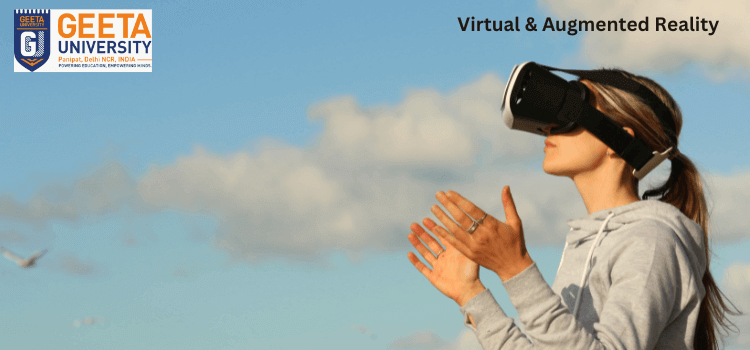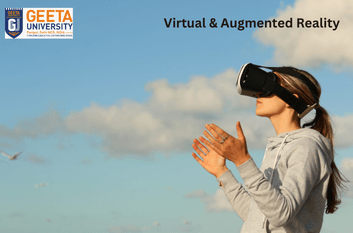Virtual & Augmented Reality – Geeta University
Uncategorized Best Career Options in geeta university, best college, best diploma university in haryana, Best engineering College in Haryana, best mba college in haryana, best MCA college in haryana, Best University for BCA in Haryana, Best University in Haryana, Geeta University, Uncategorized
Virtual & Augmented Reality - Geeta University
Virtual and augmented reality have been gaining immense popularity in recent years, and it’s not hard to see why. These technologies offer immersive experiences that can transport users to different worlds and enhance their real-life experiences in a multitude of ways.
In this blog post, we’ll explore the exciting possibilities of virtual and augmented reality and how they are changing the way we interact with the world.
Virtual reality, or VR, refers to a completely immersive experience that takes place in a computer-generated environment. By wearing a VR headset, users can enter a virtual world and interact with it as if they were really there. One of the most popular uses of VR is in gaming, where players can step into a game and become fully immersed in the action. But it is not just limited to gaming – it’s being used in a variety of fields, from education to healthcare to architecture.
For example, VR is being used in medical training to simulate surgeries and other procedures, allowing students to practice in a safe and controlled environment before working with real patients. Architects can use VR to create 3D models of buildings and structures, allowing clients to “walk through” the design before it’s built. VR is also being used to create immersive art installations and experiences, bringing art to life in new and exciting ways.
Augmented reality, or AR, is a technology that overlays digital information onto the real world. Unlike VR, it doesn’t replace the real world with a virtual one – it enhances it. AR can be experienced through a smartphone or tablet, or through special glasses or helmets. One of the most well-known examples of AR is Pokemon Go, which superimposes Pokemon characters onto real-world locations, allowing users to catch them in augmented reality.
But AR has a wide range of potential uses beyond gaming. For example, AR could be used in retail to allow customers to try on clothes or see how furniture would look in their home before making a purchase. AR could also be used in education to provide interactive and engaging learning experiences, such as overlaying information onto historical sites or science exhibits.
The possibilities of virtual and augmented reality are endless, and we’ve only scratched the surface of what they can do. As these technologies continue to advance, we can expect to see even more exciting applications in the future. But with great power comes great responsibility – as we explore the potential of VR and AR, we must also consider the potential ethical implications.
For example, these both have the potential to create hyper-realistic simulations that could be used for nefarious purposes, such as training for violent acts. We must consider how these technologies could be used to harm as well as help. Additionally, we must consider how VR and AR will impact social interactions and relationships. As these technologies become more prevalent, will we see a shift away from face-to-face communication and relationships?
Conclusion:
virtual and augmented reality are exciting technologies that have the potential to change the way we interact with the world. From gaming to education to healthcare, VR and AR offer endless possibilities for immersive experiences. But as we explore the potential of these technologies, we must also consider the ethical implications and ensure that they are used responsibly.
The future of virtual and augmented reality is bright, and I can’t wait to see what new possibilities emerge in the years to come.
And if you want to keep yourself up-to-date, then the top university in Delhi- NCR i.e. Geeta University is best option for you.
Related Posts
The Power of Critical Thinking and Reasoning: A Path to Intellectual Mastery
The Power of Critical Thinking and Reasoning: A Path to Intellectual Mastery In an era where information is abundant and readily accessible, the ability to think critically and reason effectively has never been more important. Critical thinking and reasoning are
Harnessing the Therapeutic Potential of Plant-Derived Compounds
Ms. Ranjna Assistant Professor Geeta Institute of Pharmacy, Geeta University, Naultha, Panipat For centuries, plants have been a cornerstone of traditional medicine, providing a rich source of bioactive compounds with remarkable therapeutic properties. From the willow bark’s salicylic acid to

Cloud Computing: Evolution of cloud computing technologies
Introduction Computing in the cloud has arisen as a revolutionary force in the ever-evolving world of technology, hence revolutionizing the way in which organizations operate and consumers interact with digital resources. Both the internet and the cloud have contributed to



